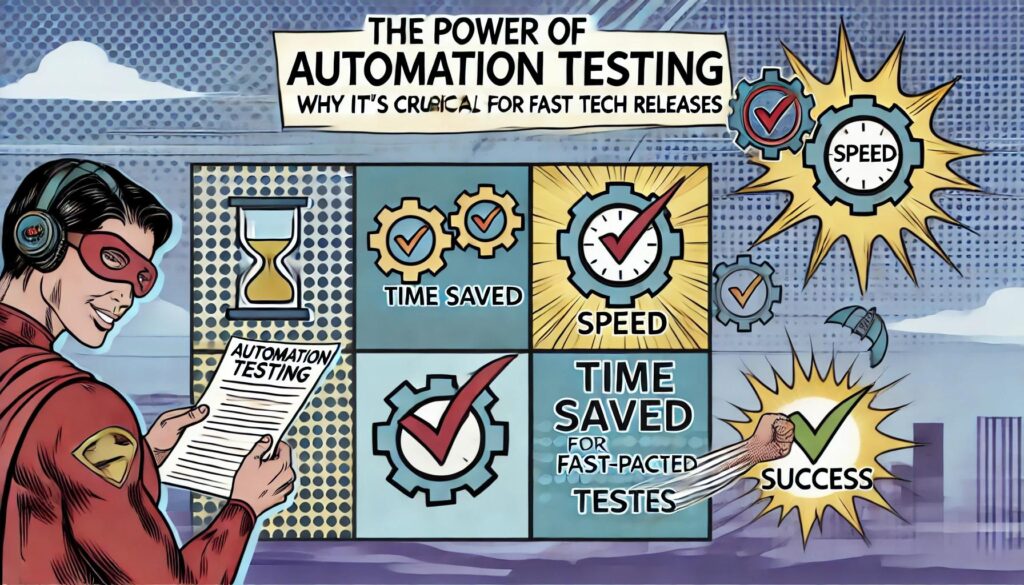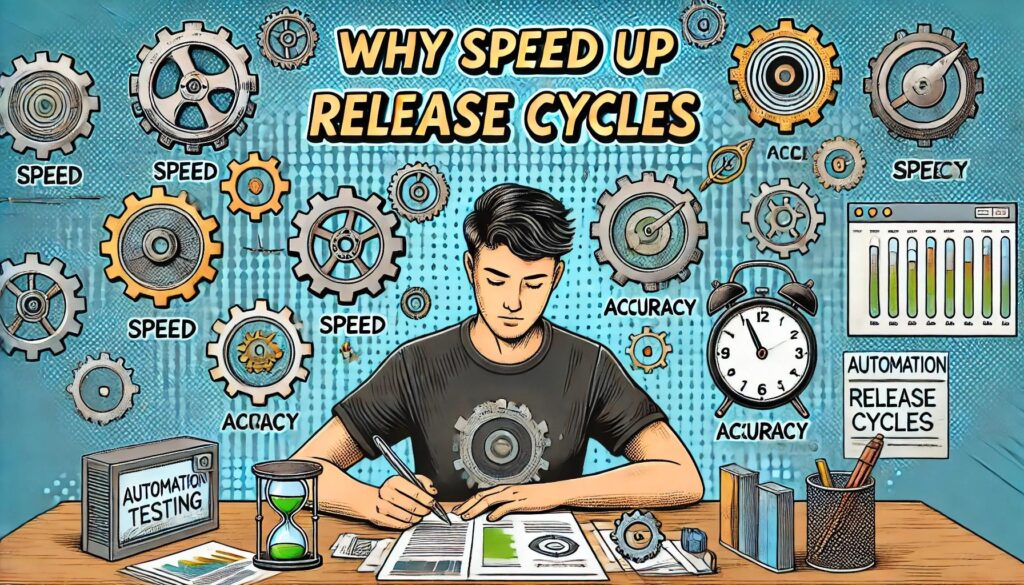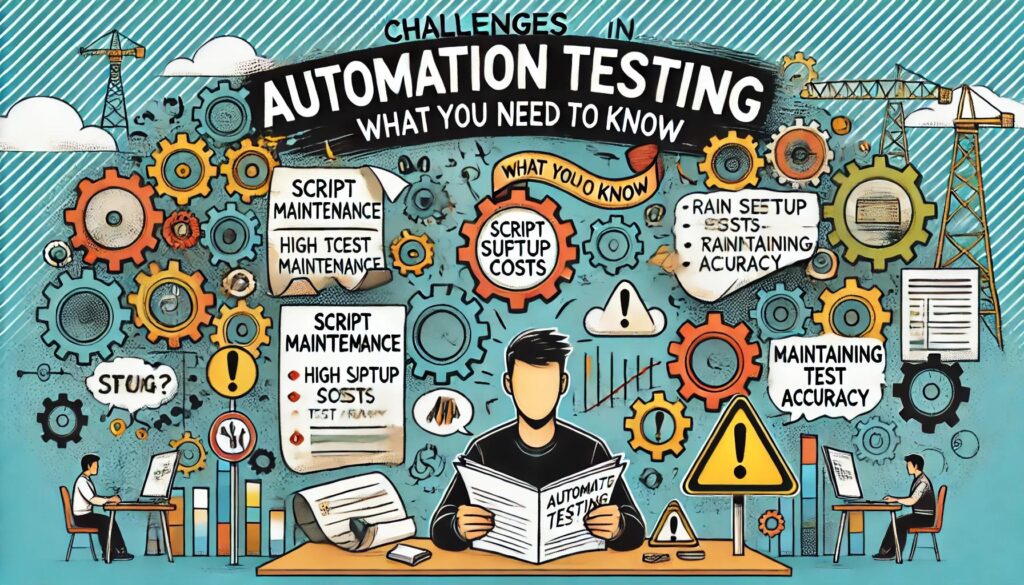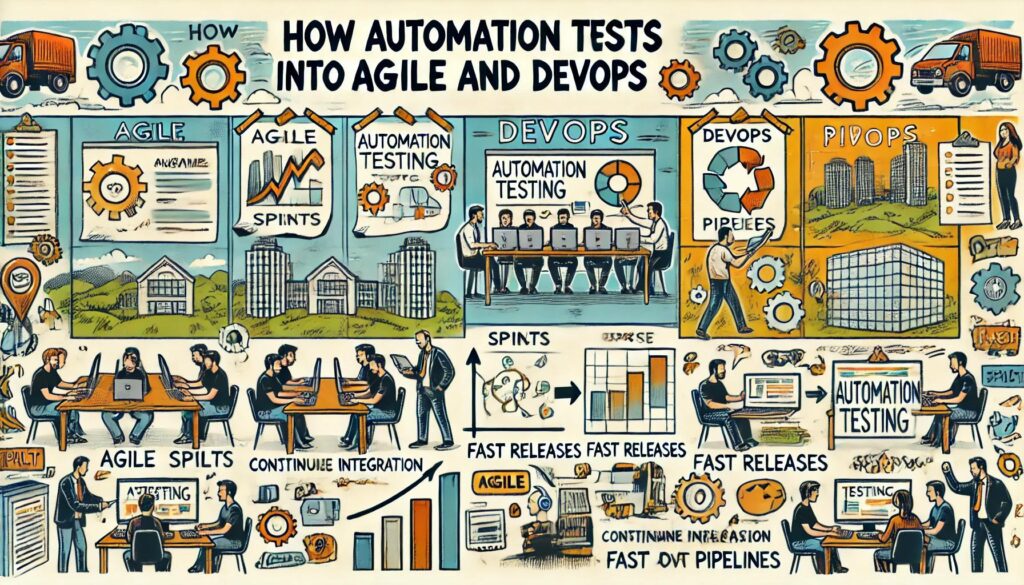Table of Contents
The Power of Automation Testing: Why It’s Crucial for Fast-Paced Tech Releases
In a world where every second counts, manual testing simply can’t keep up. Automation testing provides the speed, reliability, and precision that today’s tech-driven world demands. The faster you can test, the faster you can release—and that’s where automation comes in.
“The technology you use impresses no one. The experience you create with it is everything.” – Sean Gerety

Automation testing transforms how testing is conducted by automating repetitive tasks, freeing up your team to focus on innovation and high-level problem-solving. Not only does it speed up the testing process, but it also increases the accuracy of tests, reducing the risk of human error.
Why Automation Testing Speeds Up Release Cycles
1. Repetitive Testing, Handled Efficiently
One of the most time-consuming tasks in development is regression testing. Every new feature or bug fix requires testing to ensure that it doesn’t break any existing functionality. Automation testing allows you to run these tests quickly and efficiently, without the need for manual input every time.

- Automating repetitive tests ensures consistency.
- Test more scenarios in less time.
- Run tests across multiple environments simultaneously.
2. Continuous Integration and Continuous Delivery (CI/CD)
Incorporating automation testing into your CI/CD pipeline ensures that every change is tested as it’s integrated into the codebase. This allows for faster releases and fewer delays.
- Automation testing catches bugs early in the development process.
- It prevents last-minute surprises by testing throughout the development cycle.
- Integrated tools like Jenkins or CircleCI enable continuous testing.
“In today’s fast-paced world, your software needs to be in a state of readiness at all times.”
How Automation Testing Eliminates Manual Errors
Human Error is inevitable. The more complex your application, the higher the chance for errors to occur in manual testing. Automation testing significantly reduces the chances of missing critical issues.

- Repeatability: Automated tests follow the exact steps every time, ensuring consistency.
- Faster feedback: Automated tests provide immediate feedback, allowing developers to fix issues early.
- Scalability: Run thousands of tests across multiple devices, browsers, and environments without breaking a sweat.
Key Automation Testing Tools That Speed Up Release Cycles
1. Selenium: The powerhouse for automating web applications across multiple browsers. Selenium supports multiple programming languages and is an essential tool in every automation tester’s toolkit.
2. Appium: For mobile app testing, Appium automates applications on Android, iOS, and Windows Mobile platforms.
3. Jenkins: Jenkins facilitates the continuous integration of projects, making it possible to build, test, and deploy code frequently and consistently.

4. Cucumber: If you’re into behavior-driven development (BDD), Cucumber allows you to write tests in plain language, making them accessible to non-technical team members.
5. TestComplete: An all-in-one solution for web, desktop, and mobile app testing, enabling teams to create and execute automated tests for a range of environments.
Best Practices for Implementing Automation Testing
To fully unlock the potential of automation testing, you need a strategic approach. Here are some best practices to ensure that your automation testing efforts are successful.
1. Start Small and Scale Up Don’t automate everything at once. Begin by automating the most repetitive and time-consuming tasks, then gradually expand as your team becomes more familiar with automation tools.
2. Regularly Maintain Test Scripts Automation tests are not set-and-forget. As your application evolves, so too must your test scripts. Ensure that they are regularly updated to reflect changes in your codebase.

3. Focus on High-ROI Tests Identify the tests that will give you the biggest return on investment. These are typically regression tests, cross-browser compatibility checks, and performance tests.
4. Parallel Testing Run tests in parallel to save time. Tools like Selenium Grid allow you to run multiple test cases on different machines and browsers simultaneously.
The Role of AI and Machine Learning in Automation Testing
The future of automation testing is evolving quickly with the rise of AI and machine learning. These technologies are taking test automation to the next level by making tests more intelligent and adaptive.
AI-powered automation can:
- Predict failure points based on historical data.
- Automatically generate new test cases as your application evolves.
- Improve the speed and accuracy of automated testing.

“AI in automation testing is not just the future; it’s already here, transforming how we test and release software.”
Read more about how AI is enhancing automation in our article on Test Optimization with Machine Learning.
Challenges in Automation Testing: What You Need to Know
Despite its many advantages, automation testing comes with challenges that you should be aware of:
1. Initial Investment
The setup of an automation testing framework requires a higher upfront cost in both time and money. However, the long-term benefits outweigh this initial hurdle.

2. Maintenance
Automation test scripts need regular updates as your application changes. This requires dedicated resources and attention.
3. Not Everything Can Be Automated
While automation testing can cover a large portion of testing, there are still some areas, such as exploratory testing, that require human intuition and insight.
How Automation Testing Fits into Agile and DevOps
Automation testing is the backbone of both Agile and DevOps methodologies. In these fast-paced development environments, frequent iterations and rapid deployment are key. Automation testing ensures that testing is integrated into every phase of development, enabling teams to release updates and features faster.

- Agile development relies on quick iterations, and automation ensures that testing keeps pace.
- DevOps integrates testing into the development pipeline, allowing for faster feedback and more reliable releases.
Conclusion: Harness the Power of Automation for Faster, Better Releases
In today’s fast-paced tech world, automation testing isn’t just an option; it’s a necessity. By embracing automation, you can dramatically shorten release cycles, reduce manual errors, and improve the overall quality of your software. The tools and strategies outlined in this guide provide a roadmap to implementing automation testing that delivers both speed and precision.

But remember, automation testing is not a one-size-fits-all solution. It requires thoughtful planning, the right tools, and ongoing maintenance. With the right approach, you’ll be able to meet the demands of today’s tech landscape—faster, smarter, and with superior results.
For More articles check my other blogs.


